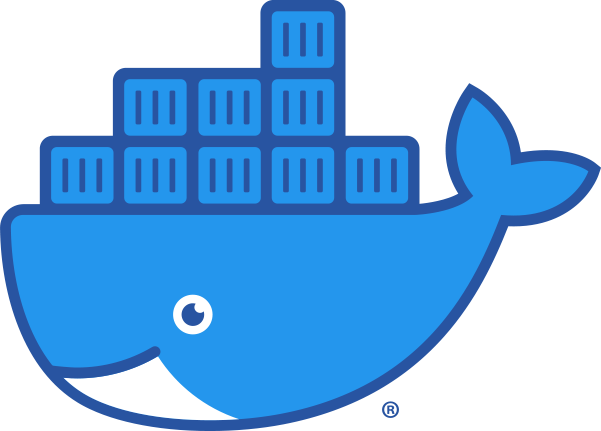Hey #testcontainers for #dotnet users! I am curious do you think we should drop the default image/version for modules: https://github.com/testcontainers/testcontainers-dotnet/discussions/1470?
Recherches récentes
Options de recherche
#testcontainers
10 years of #testcontainers!
A decade (!) ago, @whichrich did the first commit that started it all.
I'm incredibly grateful to him for starting this journey—and to Sergei for eventually pulling me in.
This project has changed my career and my life in many ways
Development and Testing of Quarkus applications using Testcontainers https://testcontainers.com/guides/development-and-testing-quarkus-application-using-testcontainers/
#Quarkus #Testcontainers #Java
This week’s post is the third and final in my series about running tests on #Kubernetes for each pull request. In the 1st post, I described the app and how to test locally using #Testcontainers and in a #GitHub workflow. The second post focused on setting up #GKE and running end-to-end tests on Kubernetes.
In this post, I’ll show how to benefit from the best of both worlds with #vCluster: a single cluster with testing from each PR in complete isolation from others.
I spent way too much time (and I mean waaaaaaay too much) to finally figure out what I was missing to be able to use #MongoDb with replica sets in #Testcontainers for #DotNet, where the port is assigned randomly to avoid conflicts.
Heads up! There's a new #testcontainers for #dotnet release: https://github.com/testcontainers/testcontainers-dotnet/releases/tag/4.1.0. This release includes two new modules: Azure Service Bus and xUnit.net. It also uses our Docker.DotNet fork, ensuring essential fixes, improvements and updates for the Docker Engine API.
My talk went great! :-)
I had a full "room"!
And here is my promised repo on dealing with integration tests in #dotnet
You can see #testcontainers utilized, #docker, #xunit custom parallel framework, #NSubstitute, #TestServer and all in #csharp testing e2e #HTTP #APIs with #auth, #MySQL, #Redis, #RabbitMQ and #MongoDB.
Probably the last #testcontainers for #dotnet toot for the next couple of days—promise Thanks to @0xced we now have a package that integrates much more convenient into xUnit.net tests: https://dotnet.testcontainers.org/test_frameworks/xunit_net/.
@jakecarpenter reminded me again of Respawn. Here is a small example that runs database tests using #testcontainers for #dotnet, along with Respawn to reset the state of a shared database between tests: https://github.com/testcontainers/testcontainers-dotnet/blob/aa8234d920a199b043abf593e3f8d20933fa3767/examples/Respawn/tests/Respawn.Tests/RespawnTest.cs. It runs tests that normally interfere with each other without spinning up additional container instances and creating the schema again .
Excited to share my new article on the Docker blog! Discover why Testcontainers Cloud is a game-changer over Docker-in-Docker for testing scenarios.
https://www.docker.com/blog/testcontainers-cloud-vs-docker-in-docker-for-testing-scenarios/
#74: But it’s soup
After a long hiatus, the whole gang is back! @javajuneau @dhinojosa @ianhlavats and @kito99 are joined by pilot and #OSS contributor, @lprimak. They discuss #microprofile, #htmlx, @devoxx Genie, #IntelliJ #AI Assistant, #Apache #Shiro, #Arquillian, #PrimeVue, #PrimeNG, #Angular, #BDD, #Jsoup, #JBake, #TestContainers, and much more! https://www.pubhouse.net/2024/10/stackd74-but-its-soup.html
Docker Testcontainers Now Available on Red Hat's OpenShift https://thenewstack.io/docker-testcontainers-now-available-on-red-hats-openshift/
#testcontainers #OpenShift
#Testcontainers are not ideal, as configuring them to run your tests efficiently is not as trivial as it's glossed; I explained that in
A simple way to configure the integration tests pipeline" (https://event-driven.io/en/configure_ci_for_integration_tests/). Still, undeniably, it can speed up the initial ramp-up phase and, if used wisely, can be a decent way to handle common testing dependencies.
2/2
#Testcontainers became a popular way of setting up dependencies for integration testing. They already provide the default configurations for tools like PostgreSQL, Kafka, MongoDB etc. Yet, sometimes you need to use something a bit less mainstream, for instance, Event Store as your event store. How to do it?
I explained that in my latest article, read more in: https://event-driven.io/en/custom_test_container_on_esdb_example/
1/
Hey #javaland, come by our #testcontainers booth in the expo area to get some Testcontainers swag, some exclusive vintage AtomicJar swag, and chat with us about all things Testcontainers.
Btw., did you know we were recently acquired by #docker? ;)
Calling the #gemma #LLM API from #langchain4j via #ollama running within #testcontainers
https://glaforge.dev/posts/2024/04/04/calling-gemma-with-ollama-and-testcontainers/
In the next iteration of my app i want to have proper test and CI for x86_64 and arm64.
So the next steps will be:
- try out #testcontainers to provide a #VaultWarden instance
- maybe send a PR with said container definition upstream
- get the CI running according to the #Relm4 documentation. That said i need to convert the actions used in the example to #ForgejoActions since i am hosting on #CodeBerg.
Then i will work on more features like the password dialog and the detail page.
Improving the Developer Experience with #Testcontainers and #OpenShift https://www.redhat.com/en/blog/improving-developer-experience-testcontainers-and-openshift
#Java #Kubernetes






